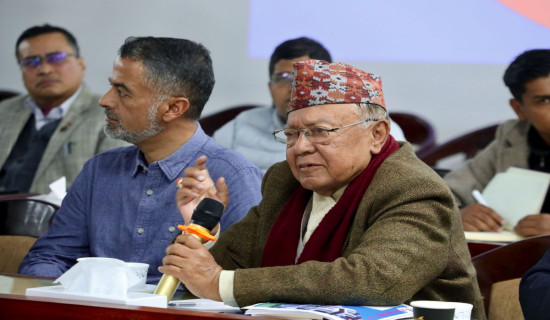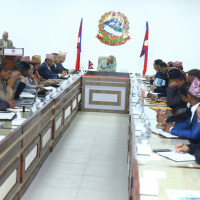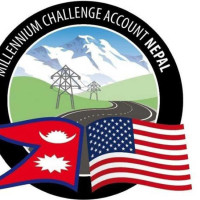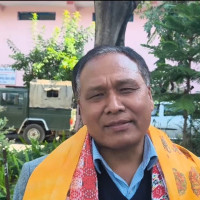- Tuesday, 23 December 2025
Local Courts Enhance Social Justice
There is a growing demand in Nepal for the establishment of local-level judicial bodies - local courts - to deliver justice more efficiently and locally in our country. This discussion gained momentum after the Kathmandu Declaration of the 16th Nepal Legal Professionals National Conference (2081). Point 13 of this manifesto emphasises limiting judicial committees to a conciliatory role and suggests forming local courts, as per Schedule 8 of the Constitution, to handle cases unresolved through mediation. This article explores why local courts are necessary and how they can improve Nepal’s Justice System.
Article 127 (1) of Nepal’s Constitution recognises the Supreme Court, High Courts, and District Courts. However, Article 127(2) opens the door for additional judicial bodies at the local level, allowing for the formation of courts or alternative dispute resolution mechanisms if needed. This shows “Legislative Intent” to form a “Local level Court” if needed in a certain Municipality or Rural Municipality. Similarly, Article 148(2) states that local-level judicial bodies, formed in line with state law, will be subordinate to District Courts, which can guide and supervise them. Schedule 8 (List 12) further provides local governments with the authority over the “management of local courts.”
Authority
Thus, we can understand that the authority of "Local Courts" is granted to local bodies. However, such a step requires provincial-level legislation to bring these bodies into existence and provide them with functional legal frameworks. Nearly a decade after the implementation of the constitution of Nepal, there are still many key laws essential to strengthening the federal structure that remain unpassed. This includes the Federal Civil Service Bill, Federal Education Bill, and laws regarding Police reform. Similarly, while federal, provincial, and local governments have begun exercising executive and legislative powers, the judiciary remains largely centralised, with no judicial structure at the local level.
The Executive and Legislative powers have been implemented by all three tiers of government, i.e., Federal, Provincial, and Local. However, the judiciary only functions at the federal and provincial levels. Currently, Nepal has one Supreme Court, seven High Courts, alongside nine permanent branch offices and two temporary ones, and 77 district courts. As we look at the recent Supreme Court Yearly report submitted to the President of Nepal, more than 25 thousand cases were pending in the Supreme Court alone, with many more in lower courts. By establishing Local Courts, particularly in areas where District Courts are overwhelmed, the case burden can be significantly reduced. This reform would not only make justice faster but also bring it closer to the people, fulfilling the federal spirit of the Constitution.
The Constitution already provides for judicial committees at the local level under Article 217. These consist of three members: the Deputy Member or (Vice-Chairperson in rural areas) and two elected members from the Municipal and Village Assembly. Their role is to settle disputes under their jurisdiction. However, challenges arise. Since many of these local representatives are not legally trained, their decisions may lack consistency and impartiality. Many vice-chairpersons and deputy mayors have started pursuing law degrees to better perform their duties — a commendable effort, but one that highlights the system’s shortcomings.
As per Section 47 of the Local Government Operation Act, 2074, these committees are allowed to resolve 13 types of civil cases and 11 other categories of disputes. Still, they are not formal courts. Their purpose is more conciliatory, focused on primary-level dispute resolution, often through mediation. To strengthen the system, local courts should be established to hear cases that cannot be resolved by judicial committees. Citizens could appeal decisions from these committees to the local courts. Further appeals could be made to the District Courts, where decisions would be final. This layered approach could significantly enhance trust in the justice system.
The Supreme Court of Nepal, responding to a writ filed by legal professionals, issued a show-cause notice to the government demanding a law for the formation of local courts. The petition requested the establishment of Local Courts and Mediation Centres in Nepal’s six most densely populated metropolitan cities. These courts would serve as pilots before expansion to other areas. To ensure quality, qualified judicial officers should be recruited through Provincial Public Service Commissions. This would not only maintain legal integrity but also promote competitive recruitment in the judicial sector. The 16th Conference of the Nepal Bar Association also called for the establishment of local courts as needed, and urged the federal government to authorise provincial governments to draft laws covering appointment, jurisdiction, and service conditions for local court judges.
Right time
Implementing local courts would reduce the pressure on higher courts, strengthen the delivery of justice, and align the judiciary with the federal system. These courts could improve access to justice in rural areas, build public trust, and speed up the dispute resolution process. The judicial committee system, though well-intentioned, lacks the authority, structure, and capacity to fully deliver justice. A clear distinction must be made between judicial committees and local courts, and the latter must be empowered with appropriate legal provisions and trained personnel.
The Supreme Court’s stance, coupled with civil society’s advocacy, makes this the right time to act. If provinces take the initiative as envisioned by the Constitution, Nepal can move one step closer to a truly federal, inclusive, and accessible justice system. The formation of local courts is not just a legal necessity but a constitutional obligation. These courts can make justice more efficient, accessible, and trustworthy. For the federal system to function in its true spirit, judicial reforms must reach the grassroots. It is time for Nepal to act with urgency, vision, and constitutional commitment.
(The author is a freelancer.)
















